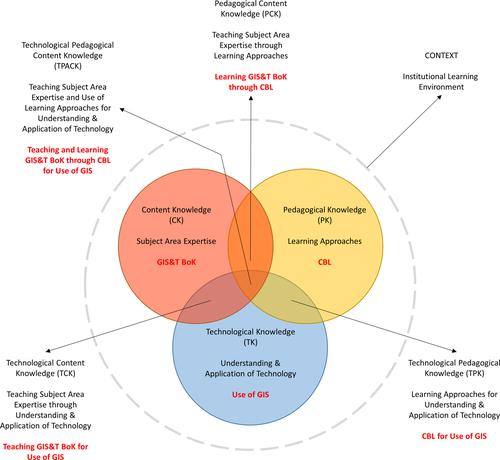在跨学科研究中学习地理信息系统的建议框架和指导方针
IF 1.7
Q2 GEOGRAPHY
引用次数: 23
摘要
地理信息系统(GIS)的跨学科研究是有益的,因为来自不同学科的研究人员有机会创造一些新颖的东西。然而,众所周知,GIS很难使用和学习。需要使用GIS的人员能够快速、轻松地学习它,这是在项目中成功使用GIS的必要条件。为了更好地支持GIS的跨学科研究,有必要了解具有跨学科经验的研究人员想要使用GIS做什么以及他们是如何学习它的。其目的是向地理教育工作者提供关于创建学习资源的建议,这些资源可以补充或补充跨学科研究人员使用的现有学习方法,以改善学习经验和对地理信息系统的吸收。本文探讨了2014年7月至2015年8月期间与来自英国、美国和欧洲的参与者进行的在线调查和访谈的结果,内容涉及跨学科研究人员如何学习GIS以及利用哪些资源和平台。提出了指导方针和框架,修改了技术教学和内容知识框架,结合了地理信息科学与技术知识体系中的非正式和基于上下文的学习和GIS概念。研究结果表明,跨学科研究人员希望使用GIS来捕获、分析和可视化信息;他们主要使用非正式的学习方法(例如,互联网搜索、观看视频、询问更有经验的人);主要使用ArcGIS、QGIS和web GIS平台。未来的工作建议资源使用上下文相关的学习活动,并牢记学科语言的细微差别。本文章由计算机程序翻译,如有差异,请以英文原文为准。

A suggested framework and guidelines for learning GIS in interdisciplinary research
Interdisciplinary research with geographic information systems (GIS) can be rewarding as researchers from different disciplines have the opportunity to create something novel. GIS, though, is known to be difficult to use and learn. It is imperative for its successful use in projects that those who need to use GIS are able to learn it quickly and easily. To better support interdisciplinary research with GIS, it is necessary to understand what researchers with interdisciplinary experience wanted to use it for and how they learned it. The aim would be to advise geography educators on creating learning resources that could compliment or supplement existing learning approaches used by interdisciplinary researchers to improve the learning experience and uptake of GIS. This article explores the results from an online survey and interviews conducted between July 2014 and August 2015 with participants from the UK, the US and Europe on how interdisciplinary researchers learned GIS and which resources and platforms were utilised. Guidelines and a framework are presented, modifying the Technological Pedagogical and Content Knowledge framework, incorporating informal and context-based learning and GIS concepts from the Geographic Information Science and Technology Body of Knowledge. Findings show that interdisciplinary researchers want to use GIS to capture, analyse and visualise information; they largely use informal learning approaches (e.g. internet searches, watching a video, ask a more experienced person); and they predominantly use ArcGIS, QGIS and web GIS platforms. Future work suggests resources use contextually relevant learning activities and bear in mind nuances of disciplinary language.
求助全文
通过发布文献求助,成功后即可免费获取论文全文。
去求助
来源期刊

Geo-Geography and Environment
GEOGRAPHY-
CiteScore
3.20
自引率
0.00%
发文量
12
审稿时长
25 weeks
期刊介绍:
Geo is a fully open access international journal publishing original articles from across the spectrum of geographical and environmental research. Geo welcomes submissions which make a significant contribution to one or more of the journal’s aims. These are to: • encompass the breadth of geographical, environmental and related research, based on original scholarship in the sciences, social sciences and humanities; • bring new understanding to and enhance communication between geographical research agendas, including human-environment interactions, global North-South relations and academic-policy exchange; • advance spatial research and address the importance of geographical enquiry to the understanding of, and action about, contemporary issues; • foster methodological development, including collaborative forms of knowledge production, interdisciplinary approaches and the innovative use of quantitative and/or qualitative data sets; • publish research articles, review papers, data and digital humanities papers, and commentaries which are of international significance.
 求助内容:
求助内容: 应助结果提醒方式:
应助结果提醒方式:


